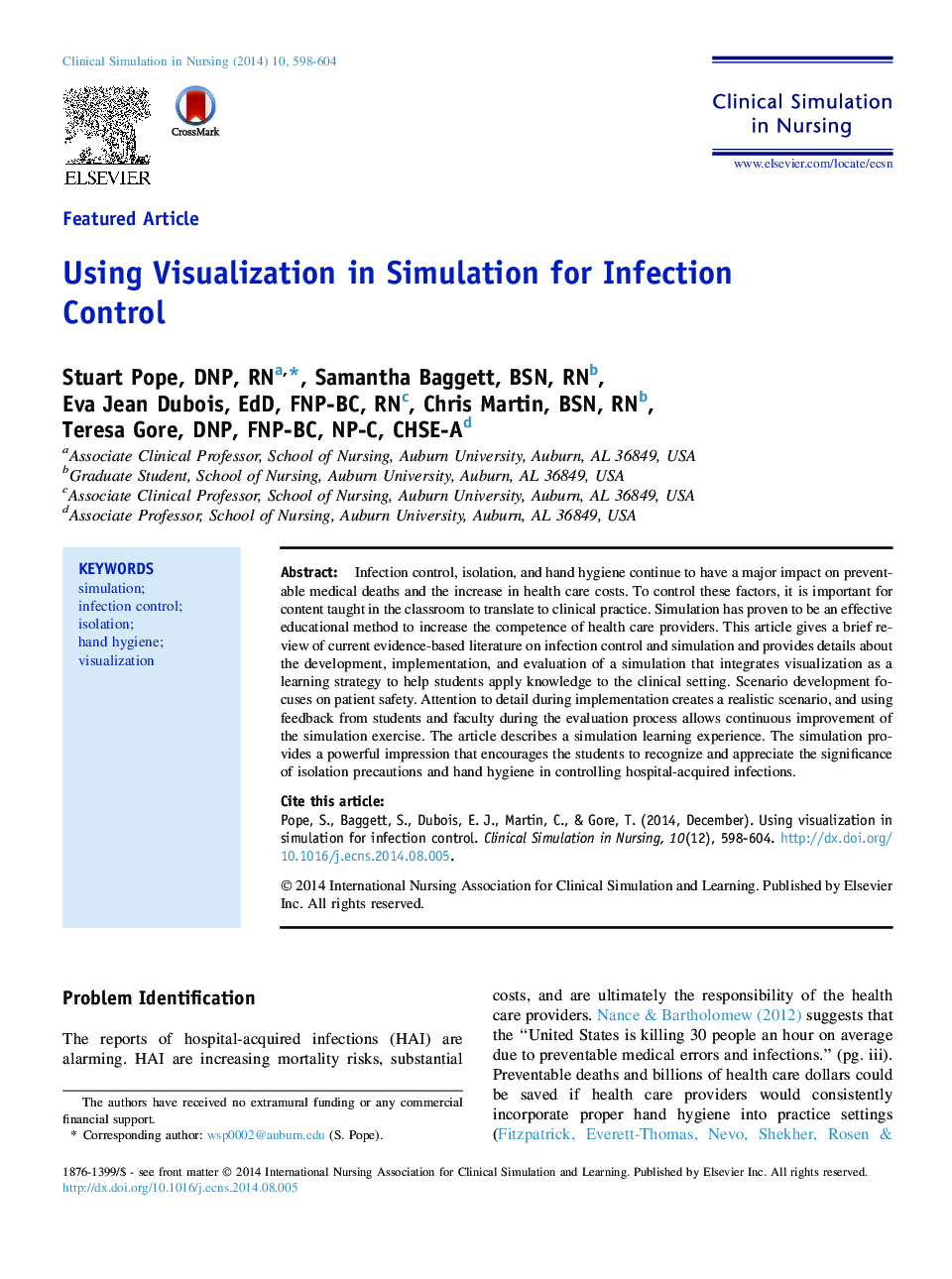| Article ID | Journal | Published Year | Pages | File Type |
|---|---|---|---|---|
| 2645663 | Clinical Simulation in Nursing | 2014 | 7 Pages |
•Reviewed the effects infection control, isolation, and hand hygiene have on deaths and health care costs.•Examined how to take classroom content and translate to clinical practice.•Provided details about development, implementation, and evaluation of a simulation that integrates visualization as a learning strategy.•Creates a realistic scenario that focuses on patient safety.
Infection control, isolation, and hand hygiene continue to have a major impact on preventable medical deaths and the increase in health care costs. To control these factors, it is important for content taught in the classroom to translate to clinical practice. Simulation has proven to be an effective educational method to increase the competence of health care providers. This article gives a brief review of current evidence-based literature on infection control and simulation and provides details about the development, implementation, and evaluation of a simulation that integrates visualization as a learning strategy to help students apply knowledge to the clinical setting. Scenario development focuses on patient safety. Attention to detail during implementation creates a realistic scenario, and using feedback from students and faculty during the evaluation process allows continuous improvement of the simulation exercise. The article describes a simulation learning experience. The simulation provides a powerful impression that encourages the students to recognize and appreciate the significance of isolation precautions and hand hygiene in controlling hospital-acquired infections.
